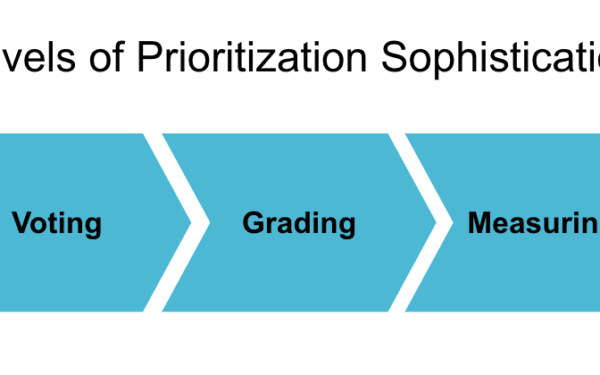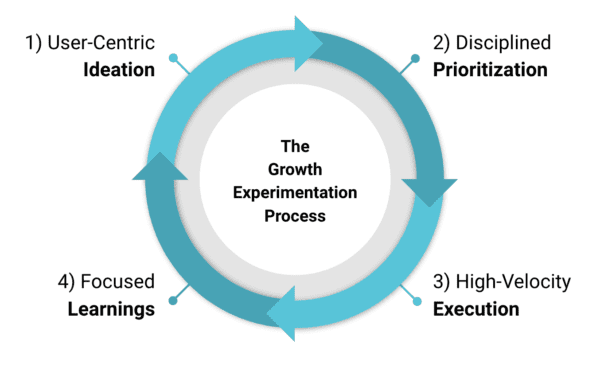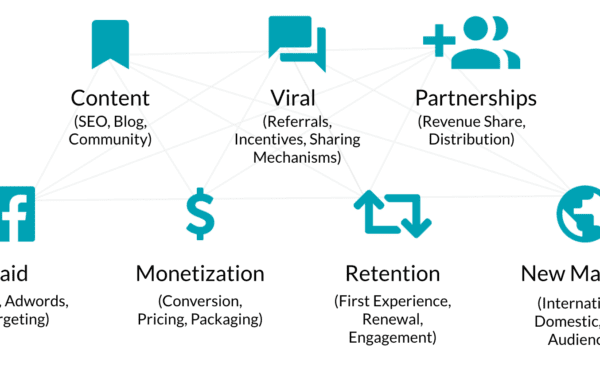One of the most impactful, high ROI activities you can do to improve your effectiveness, is speaking with and learning from other leaders in the same area of expertise.
In that spirit, I’m sharing top takeaways from my conversations with some of the smartest people that I am fortunate enough to know. Oftentimes, these are things that you can’t or wouldn’t find on the internet and they give you a different angle of thinking about a familiar topic which then in turn expands your perspective and allows you to achieve greater success. Enjoy!
Traffic:

Sujan Patel – Managing Director @Ramp Ventures @Web Profits:
“Gaming” or “hacking” Google search with the traditional methods is dead. You can still hack it, but you learn that the only way to really do it is to play by their rules. The key then, is to figure out how to hack growth using their rules and the most scalable, high-velocity approach possible to give Google what it wants.

Chris Uglietta – Lead Growth Product Manager @Zynga:
You can use paid affiliate sources (lower quality), to boost your daily mobile app downloads and achieve top placement in trending and top app lists. Test and calibrate the minimum download volume threshold you need for your category to get top placement and measure the benefit to organic downloads.

Cecile Lowery – Growth Manager @GrubHub:
Affiliate lead channels for mobile can be littered with bad quality, so there are many companies that aren’t able to get an acceptable LTV / CAC when they analyze the numbers. However, you can significantly optimize these channels by 35%-40%. It takes a rigorous and analytical process, and many times the affiliate partners will not like to give you that level of control, but in the end, you have to force them to in order to get the channel optimization you need.
Sign-up:

Chris More – Head of Growth & Services @Firefox:
You don’t have to make all sign-up flow steps mandatory – using language in the header such as “almost done” along with clear value props can drive desired conversion rates while giving users choice and providing user value delivery further down the funnel. Use a tool like Amplitude to automate the data science of determining the correlation power between specific user actions during onboarding and the desired retention behavior downstream.

Scott Schmidt Head of Growth & Acquisition @Stash:
Customizing acquisition funnels and flows to your top segments can give you a 20%-30% improvement to acquisition. Determine who are your top 2-3 largest inbound audience segments and identify what their main driver is for signing up – take that and make sure its customized to meet their needs / expectations all the way from paid advertising through the signup flow through on boarding for that segment. Continue to do this on segments where you find large potential interest from at the top of the funnel.

Chris Woodard – VP of Marketing @Tenfold:
Looking at a conversion landing page, we tend to forget that our site visitors are just people, especially in B2B products. When evaluating a conversion landing page, it is important to give it a “real person” test – trying first to understand what the needs are of the target visitor audience, and then whether the page aligns to and is successful with satisfying their needs and questions as a potential customer in a clear and simple way.
Engagement:

Nick Allen – Head of Engagement Marketing @Ipsy @Lyft:
Not all sign up friction is a bad thing, if asking more drives deeper investment in the product and loads up future triggers for personalized engagement. Weigh the trade off carefully between optimizing for immediate signup conversion vs. longer term engagement and retention. Put the data you collect to work from day one to show new users the payoff of their time investment as early and often as possible. To drive even deeper engagement beyond 1st time use, consider incentives that push your audience into a repeated behavior. Instead of $10 off the first transaction, try $3 off each of the first 3.

Andrew Watts – Marketing Manager @HQ Trivia:
You can implement a lot of subtle mechanisms in a product which draw on human psychology to raise their emotion level and build excitement. For instance, if you are going to give someone a prize or really anything they would like to receive, you can have an animation that goes for 3-5 seconds and delays the presentation / reveal of what they desire – thus increasing their excitement and anticipation which in turn amplifies their whole experience with the product.

Tyler Denk – Head of Product & Growth @Morning Brew:
There are usually at least 2 types of referrers: power and regular. Most early referral programs treat them as the same, but in reality, they are two distinct audiences which require different paths and flows. It can give a high ROI to invest a little time in identifying early segment indicators and making at least 2 tracks from the beginning to fuel higher referral channel acquisition.
Process:

John Egan – Head of Traffic Growth @Pinterest:
Empowering people in a growth org to be more autonomous has been one of the biggest drivers of drivers of improved speed and effectiveness. Build a culture where every member of the team is expected to act as a mini-PM for their projects, and a culture where every member of the team is expected to contribute ideas of experiments to run. This will help the team move and iterate much more quickly and generate more high quality growth ideas to try out.

Travis Devitt – Head of Growth @Aceable:
There is a powerful, nonlinear compounding effect from experiment wins. Growth teams that can run lots of tests will ultimately get more test wins. Even with a small win on each successful test (+10-25% uplift in key metric), enough small wins added together can compound into dramatic growth rates for the business. This is why testing velocity is so important and why removing constraints for growth teams should be a priority for startup leadership. It’s also why small advantages in areas like analytics, audience segmentation, advertising creative/copy, bidding, landing page design, onboarding, and checkout conversion can ultimately feed a virtuous cycle of customer acquisition where gross margin is generated & reinvested in new channel tests, improving customer experience, and other areas.

Ryan Farley – Chief Marketing Officer @LawnStarter:
Everything can be executed in a faster, simpler way. Anytime you catch yourself feeling like an initiative you started or are about to start is complex, that is because it is. You should never be thinking in terms of what could be done in a month, or even a week – what could you do in a day, today? Things obviously take more than a day, but you should have thought through and be able to clearly describe what a “1-day” version would be.

Benedict Dohmen – Chief Executive Officer @Benitago Group:
Product development doesn’t have to be that difficult and full of uncertain decisions. If you are strong in executing a fast, consumer-centric testing and iteration process which is based on data insights, there is actually a small chance that you don’t deliver a product that people love and adopt. The problem is that for most companies, that is not one of their core competencies.

Greg Gerla – Growth Product Manager @Indeed @FunnelEnvy:
In-person events are one of the best growth channels, and one I recommend for anyone selling to the Enterprise customer. The network effect of having one of your clients speak to prospective clients is more powerful than any webinar. Try hosting a speaker series lunch or dinner where half the attendees are existing and half are new customers. People will be there to network, but as the glue behind the event, your product will come up in conversation.

Deedee Chiang – Growth Engineer @Chime:
Some of the most creative growth ideas come from members outside of the immediate Growth team. Some of the most interesting, untested ideas comes from looking at what companies in outside industries are doing. For example, companies in finTech can leverage and learn from successful tactics pioneered by companies in the movie streaming or transportation space. Startups in the food and service industry can look to what’s worked in the hospitality and banking industry.

Avery Kadison – Sr. Director of Product, Fraud @Dosh:
If there are mediums that someone can try to exploit, and it is worth their while, you can be sure that people will try to exploit them. People try to guess at what these “bad actors” will try to do based on known product weaknesses, but the simplest and quickest way is just to observe their behavior and then make hypotheses about how they would change their behavior after you fix the hole. Taking it further, you can run MVP experiments specifically to these groups and see what they actually do, rather than just hypothesizing.
People & Org:

Cameron Jacox – VP of Growth @Lark:
If you have a growth mindset, you can usually tell when a hire candidate does right away. They are hungry, data-driven, fast, creative problem solvers. You can trust your gut more than you might think on that if you are in fact looking for those types of people.

Cole Mercer – Senior Product Manager @Bonobos @Soundcloud:
There are product managers that excel in a number of different areas that make them strong whether that be data analysis, project management, technical aptitude, or experience design among many others. But, one of the rarest and probably hardest to learn skills is being a visionary and good storyteller / presenter. That’s something some people have innately but some don’t at all – it is crucial to become proficient with selling the vision to internal stakeholder in order to be successful as a product manager.

Scott Boecker – Chief Product Officer @Dosh:
Everyone is responsible for growth and that has to be the expectation across the company in order to be effective. Everything you do should be able to be tied back to a growth model which ultimately ties back to the financial model so that everyone can see where things stand currently, ongoing improvements, and the plan to achieve KPI targets.

Zak Cocos – Growth Product Director @Indeed:
There are often two core business goals that are sometimes at odds with each other: growth and quality. Typically growth trumps quality, but if you are thoughtful in separating the two, you can organize your teams and KPIs to address both, delivering a more balanced growth approach that doesn’t sacrifice user experience.



